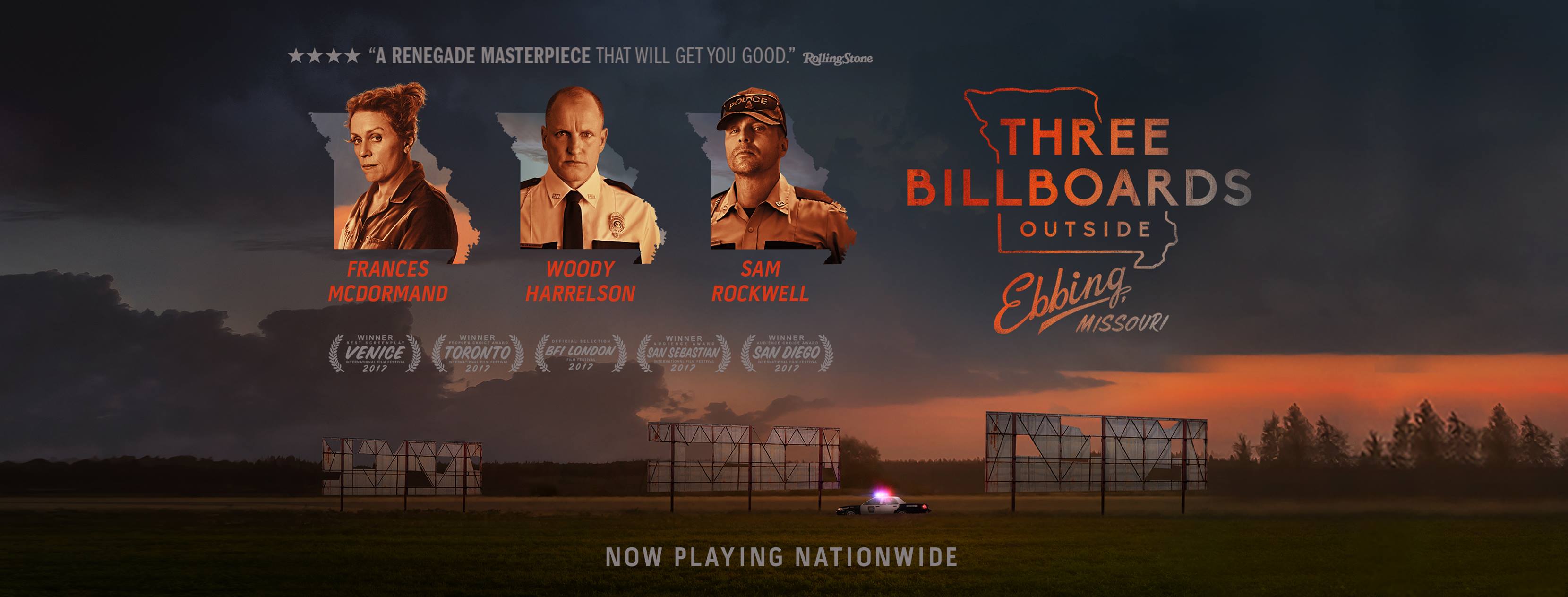Do you enjoy teenagers plotting and committing violence? Rich kids with boarding school problems? Young adults who are unable to process or regulate emotions properly struggling with empathy and morality? Then Thoroughbreds is the movie for you. It’s received good (if confused) critical reviews and promises to be an intense tale of teenage apathy, friendship, and of course, violence. Playing now at the State Theater. Student tickets are $8.
Author: kjwuzhere

REVIEW: The Last Days of Judas Iscariot
The play begins with a distraught mother’s monologue about her son, dead now, presumably in Hell, and hated by the world. She states that if her son is in Hell then God cannot exist. Needless to say, the monologue is full of despair and unease, an uncertainty about certain fate–it is a mother refusing to accept what she knows to be true, with such force and emotion, that the audience also doubts what they know to be true. This is, in part, the beauty of The Last Days of Judas Iscariot–the certainties you come in with must be tossed aside, here, nothing is certain and everything is up for debate.
Then it all shifts. The stage goes dark. When the lights come back on, we are being introduced to Purgatory, the place people go where their fates have not yet been decided, quite literally, in a courtroom. The mood is no longer dramatic, but funny, even bubbly, as a vivacious angel shows us around. Deathly silence has been replaced by laughter as we are introduced to the real characters of this show: a judge and two lawyers, one fighting for Judas, the other for Heaven. This is now a courtroom drama, albeit one ruled by the dead.
As the play goes on (and it does go on–it has a runtime of 2.5 hours), many different characters, primarily historical figures or religious icons, make appearances in the courtroom, called on as witnesses. These range from Mother Teresa to Sigmund Freud to Pontius Pilate, and when I say characters, I mean characters. These are not mild-mannered, historically-researched portrayals, but updated, bawdy versions, almost cartoonish. Mother Teresa is practically deaf and prone to talking about “handsome boys.” Sigmund Freud is a braggart, egotistical and cocky, beyond what even his worse critics would claim. Pontius Pilate dresses and acts like a rapper from the 90s, basketball jersey and goldchains, talking about his bros. They are caricatures, in a way, and easy humor, but somehow, they still manage a deadly seriousness. They have, after all, come here to decide a man’s eternal fate, and though sometimes that thought is not at the forefront, it is never fully forgotten, and the tone of play flips between with ease. Further, though many of these characters clearly side with either the prosecution or defense, their testimonies never fully condemn or exonerate. Viewers do not get a clear answer on Judas and what he deserves, only waters further muddled by questions personal, philosophical, and political. The play demonstrates that even if we can construct the events exactly as they happened, we will never fully understand the why behind them or how to proceed.
If you want answers and certainties, this is not the play for you. Even at the end, after the verdict has been passed, the final scene leaves the audience not knowing what they hope, what it even is they could hope for. Though often a comedy, this play is, at its core a tragedy.
SMTD’s production of The Last Days of Judas Iscariot was excellent. The acting was phenomenal, managing the twists in tone deftly and with heart, and the Arthur Miller made for a particularly perfect stage.

REVIEW: Three Billboards Outside Ebbing, Missouri
If there is one word that can describe Three Billboards Outside Ebbing, Missouri, it’s anger. Everyone in this movie is angry. The mother whose daughter was “raped while dying” is angry. Her son is angry. Her ex-husband is angry. The police officer whose boss is dying of cancer is angry. His mother is angry. The dentist is angry. The priest is angry. The dwarf who asks the grieving mother on a date is angry. The coworker of the mother is angry. The man who helps put up the billboards is angry. The town is angry.
The daughter, in the one scene we have with her, is angry, very angry.

Some of this anger is related to the billboards, most of it is not. Some of this anger is about specific things, specific events, specific people–and some of it is more general, an anger about life and life’s wrongdoings, an anger that has been with these people since they were born, since the time they were wailing babies, that has followed them closely throughout their days and will inhabit their bodies until the day they die. Some of the anger is generational, decades old, some of it is fresh, a wound yet healed. Some of the anger is violent, is violence, and some of it is hate and hatred.
Almost all of the anger, by the end of the film, is understandable, even when it is wrong or contradictory. People are hurt, people suffer, and sometimes the resulting anger is misplaced, but never does it move beyond the realm of the real, never does it become too much to believe. Anger, in this movie, is the grand equalizer. It is what happens when people are hurt. It is not only understood and understandable, it is the very means of understanding.

Three Billboards Outside Ebbing, Missouri is playing at the Michigan Theater. Student tickets are $8.
REVIEW: Lady Bird
Probably by now you’ve heard of Lady Bird and how it’s breaking records for rave reviews. Then, I suppose the question you’re thinking is if this is going to be another rave review. The answer is, well, it’s complicated.
Let me begin by saying Lady Bird is a good movie and it’s worth seeing. You might not be blown away by it, but one could hardly watch it and think it poorly done. Between the characters, the plot, the cinematography, there are hardly any gaps or holes to slip critiques into. The film is incredibly well-done, as everybody else by this time has noted. It is also a part of a collective style, or perhaps trend, one that makes me question the role of art and film.
Lady Bird is, without a doubt, incredibly real. From dialogue that feels like actual teenagers recorded their conversations, to characters who were flawed and unlikable and yet still likable because people are always both, the movie was like watching, not a documentary (because there is always the awareness of the observer in those) but as if someone had supplanted your memories with their own. It is like watching someone else’s life, with both the strangeness of another person and the familiarity of reality.

In this sense, the movie is reminiscent of last year’s Manchester by the Sea. Though the films feature wildly different subject matter, there is that same sense of the real embedded in both films, this unshakable unease of things hitting too close to home. What I am questioning is the worth of this real in art, particularly film. What draws us (myself included) to these works that are doing their best to mime and play act the real world without much other kinds of artfulness or fantasy or fiction slipping through? And are they worthwhile?
I’m a big believer in art-with-a-purpose. Film should entertain us, yes, but it should also be saying something (at least good film should). So when I watch a hyper-realistic film like Lady Bird, I have to wonder what it is attempting to state, because the downfall of hyper-realism is that since life doesn’t come with pithys or messages or subtext, in order to stay true to what is real you must avoid a message, you must strip your film of such extra things, you must only represent and not show us possibilities beyond the real. There is something worthwhile in representation, in showing us precisely what it is like to live another life, but there is also something lacking when there is only representation. These movies are, in some senses, like hyper-realistic pencil drawings: they are impressive on a technical level, they show the real world through an alternative medium, but they lack the spark that makes art, the imaginative element that moves us from what is to what could be.

Still, I highly recommend Lady Bird. Like I said, it is impressive and this review is, in part, playing Devil’s advocate and exploring what we lose when films become too real–it ignores entirely (and intentionally) what we might gain.
Student tickets are $8 at the Michigan Theater and the movie will continue to play for several weeks.

PREVIEW: Lady Bird
Lady Bird is an indie film about a high school girl struggling with her relationship with her mother. So basically every indie film, however, this one currently has a 100% fresh rating on Rotten Tomatoes (with over 100 reviews!) so if you’re going to see any indie film about teenage girls this year, make sure it’s Lady Bird. The film opens at the Michigan Theater today and student tickets are $8.

REVIEW: Dessa @ The Blind Pig
Tuesday night, which happened to be before my Math 481 midterm (a fact I did not realize until I had already agreed to review this concert), Dessa and crew came to town. Though I had been looking forward to this concert for sometime, I had also been counting on Tuesday to study. I ended up choosing the concert, but I might live to regret this decision (in approximately a week, when I get the exam back).
When I got there, the first act was already well underway though the crowd was still sparse. The song I could hear James Gardin playing as I entered the venue struck me as generic and ugly, but the next few songs he played were much better. His songs are shockingly well-produced for a local rapper, featuring soothing beats and rhythmic choruses. The lyrics, much like his stage presence, feature uplifting verses and a message for unity in times of trouble. Although the audience was clearly not there for him, he succeeded in getting people interested and vibing to his music. Furthermore, his crowd interactions demonstrated excitement and compassion for his audience, which helped to start the concert off on a positive note. At one point, he asked for two volunteers to say a bit about themselves and then freestyled based on what they told him–and as someone not often impressed by freestyle, he did quite well.
The next opening act (and also Dessa’s backing band) was MONAKR. Their music served as an interlude between Gardin and Dessa’s rapping. Their lyrics were either softly sung or gently wailed, depending on the tempo of the song. At times, there were rapid and impressive drum beats dragging the songs along, but others were almost entirely electronic, built from varied sounds slowly coming to crescendo. Either way, the tone of their set was distinctly different, and chilled the audience to a certain extent. Their stage presence featured a few too many jokes about their name (for reference, it’s pronounced the same as moniker) and didn’t have a clear speaker (both the singer and the guitarist would attempt to speak at the same time) designated to talk to the audience. Still, I would definitely recommend checking out their sound.
Finally, there was Dessa. Her performance was upbeat and her songs simultaneously rocked and soothed, featuring rapping and singing and tightly produced melodies. In between songs, she was clearly a performer who loved her fans, and the words she said seemed to come from an open and honest place, as if she were writing in a journal and not speaking to a room filled with a couple hundred. Though she played old favorites, much of her set was spent testing out new material for an upcoming album (still unannounced), and as a fan, there isn’t much greater pleasure than these concert sneak peaks. Overall, Dessa navigated her performance and dialogue well, and demonstrated a love and passion for her work, one that she has for over a decade in an often unforgiving industry.




